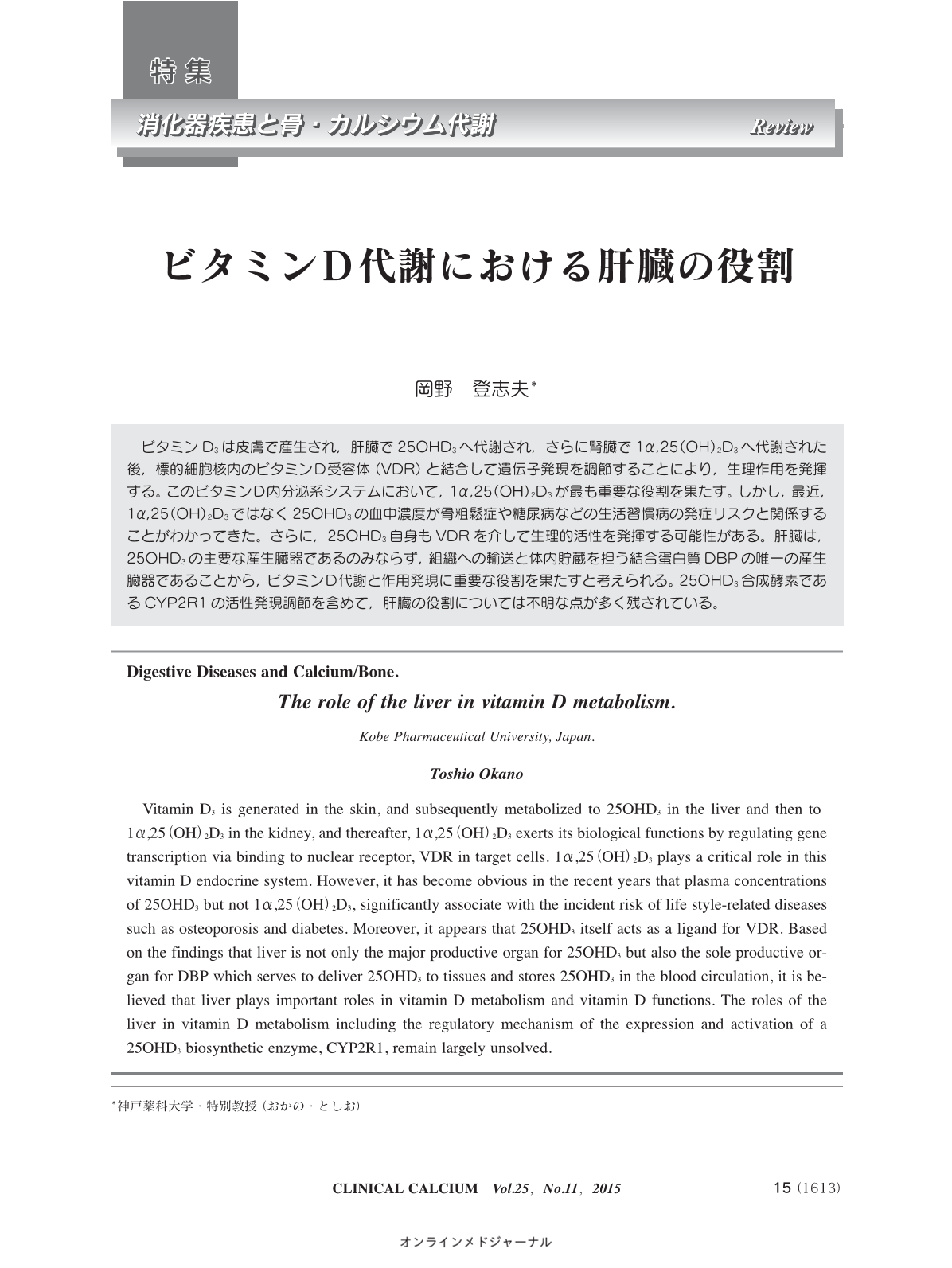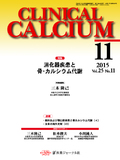Japanese
English
- 有料閲覧
- Abstract 文献概要
- 1ページ目 Look Inside
- 参考文献 Reference
ビタミンD3は皮膚で産生され,肝臓で25OHD3へ代謝され,さらに腎臓で1α,25(OH)2D3へ代謝された後,標的細胞核内のビタミンD受容体(VDR)と結合して遺伝子発現を調節することにより,生理作用を発揮する。このビタミンD内分泌系システムにおいて,1α,25(OH)2D3が最も重要な役割を果たす。しかし,最近,1α,25(OH)2D3ではなく25OHD3の血中濃度が骨粗鬆症や糖尿病などの生活習慣病の発症リスクと関係することがわかってきた。さらに,25OHD3自身もVDRを介して生理的活性を発揮する可能性がある。肝臓は,25OHD3の主要な産生臓器であるのみならず,組織への輸送と体内貯蔵を担う結合蛋白質DBPの唯一の産生臓器であることから,ビタミンD代謝と作用発現に重要な役割を果たすと考えられる。25OHD3合成酵素であるCYP2R1の活性発現調節を含めて,肝臓の役割については不明な点が多く残されている。
Vitamin D3 is generated in the skin, and subsequently metabolized to 25OHD3 in the liver and then to 1α,25(OH)2D3 in the kidney, and thereafter, 1α,25(OH)2D3 exerts its biological functions by regulating gene transcription via binding to nuclear receptor, VDR in target cells. 1α,25(OH)2D3 plays a critical role in this vitamin D endocrine system. However, it has become obvious in the recent years that plasma concentrations of 25OHD3 but not 1α,25(OH)2D3, significantly associate with the incident risk of life style-related diseases such as osteoporosis and diabetes. Moreover, it appears that 25OHD3 itself acts as a ligand for VDR. Based on the findings that liver is not only the major productive organ for 25OHD3 but also the sole productive organ for DBP which serves to deliver 25OHD3 to tissues and stores 25OHD3 in the blood circulation, it is believed that liver plays important roles in vitamin D metabolism and vitamin D functions. The roles of the liver in vitamin D metabolism including the regulatory mechanism of the expression and activation of a 25OHD3 biosynthetic enzyme, CYP2R1, remain largely unsolved.



